A special question and answer edition of the show where the team get to grips with your queries, including, do hairs know they've cut? Is someone who sweats sooner fitter? How do noise-cancelling headphones work? How do we know what's inside Earth? Why are there no whale-sized insects? Does protein suppress appetite? And could there be a planet with a green atmosphere?
In this episode
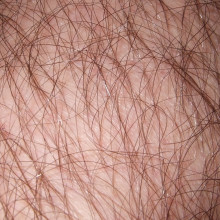
Do hairs know they've been cut?
Ginny - So, the short answer is that your hair doesn't know that it's been cut. This is a really common myth. People think that if they trim their head hair when they're trying to grow it, that it'll make it grow faster and people say that if shave your legs or your face, it makes it grow back faster, but that's not actually the case. The only thing that affects how long your hair is and how fast it grows is the hair itself and your genetics. So, hair goes through 3 phases when it's growing. There's the anagen phase which is the growth phase and this is when it actually grows, when it gets longer. Now, on head hair, that can last between 2 and 6 years and how long that phase is, counts as how long your hair could grow to. So, some people seem to be really lucky and they can grow hair down to their waist whereas other people, no matter how hard they try, it will never get pass shoulder length.
Chris - Not their eyelashes though, surely.
Ginny - No, not their eyelashes. Now, that's a point because body hair has a much shorter anagen phase. It's only a couple of months and that's why it never gets as long as head hair. I think there are few exceptions of weird people who've managed to grow their underarm hair ridiculously long in the Guinness Book of Records, but with a couple of weird exceptions, it doesn't get as long as the hair on your head because this anagen phase only last a couple of months. Now after that phase, what happens is the hair is cut off from the blood supply so the follicle sort of dies and it enters a dormant stage and then a bit of time after that, it'll fall out as a new hair begins to grow. So, what you're seeing is you're trimming say, your leg hair while it's still in the anagen phase - it's going to continue growing. But it can only ever get to a certain length because that anagen phase will end and it will fall out.
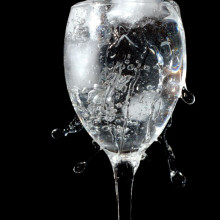
How does melting ice affect the volume of a drink?
Transcript to follow...

Is someone who starts sweating sooner fitter?
Ginny Smith - So, that's a really interesting question, but how much you sweat is affected by loads of different factors.
Obviously, the weather: on a really hot sunny day like today, you're going to sweat more because sweat is a cooling mechanism. It aims to dampen your skin then you get evaporation and that cools you down.Now, when we do exercise, of course, we get warm, so we sweat more.
So, it would seem that someone who sweated more would be more efficient. They're better at cooling themselves down, so that's more likely to be someone who's fitter and that was what people thought. There were plenty of experiments that seemed to show that. They got some unfit people and they got some fit people, and they got them to do exercise so that they were exerting themselves the same amount, and the fit people sweated more.
But, when you look at this a bit more carefully actually, the difficulty comes in how you determine that someone is exerting themselves by the same amount. So, what they did here was they looked at the maximum oxygen efficiency which is a kind of measure of fitness and they got people to work at 60% of how hard they can work. So, the fit people were obviously working a lot harder to get to that 60% than the unfit people were and they were sweating more. But when you look at it more closely, because the fit people were having to work harder, they were getting hotter.
It seems that if you're fitter, yes, you can run faster and use the same proportion of your maximum oxygen usage, but you're still making more heat because you're running faster. You don't get any more efficient at running without producing heat. So actually, these fit people were just getting hotter and therefore, sweating more.
When they did the experiment, but they controlled for the heat that the people were producing, so they made the unfit people and the fit people run to produce the same amount of heat, they didn't find very much difference in their sweat apart from on their foreheads. In fact, the unfit people seem to sweat more on their forehead, which is a bit surprising and unusual.
So, I think just looking at two people in the street who are running along and seeing that one person is sweating and one person is not, you can't really tell anything about fitness levels because of course, there are other factors that affect it as well. So, women on average sweat less than men and larger people will sweat more than smaller people because they've got a larger volume compared to their surface area, so they find it harder to cool down.
So, it's kind of hard to tell, but it doesn't seem that there's a huge difference once you control for this heat production.

Does dietary protein suppress appetite?
Chris Smith - Well, the answer is Tad, that what researchers in recent years have discovered is that there are populations of nerve cells in the brain which can sense the nutrients that you're eating. And here on the Naked Scientists just under 2 years ago, we had a researcher from Cambridge University called Dennis Burdakov who came in and he was describing a series of experiments where they have found a group of nerve cells in the bottom of the brain, a region called the hypothalamus and these nerve cells are called orexin nerve cells. They make you wake up. They also control what you want to eat. He has found that if you feed these cells with the same sorts of amino acids which are the building blocks of proteins, that someone would get from eating a protein-rich diet then these nerve cells dramatically alter their activity. Previously, we thought they only changed their activity in response to sugar levels, but it would clearly indicate from his work that they also change their activity on the basis of proteins as well. This therefore could be the basis of why, when someone eats a nice protein-rich breakfast, they then don't tend to feel as hungry through until say, lunchtime compared with people who are only fed a carbohydrate-rich breakfast because in experiments on groups of individuals who are doing similar sorts of jobs, similar sorts of metabolism, that's what you find. People who eat more protein feel less hungry through until their lunchtime compared with people who eat either no breakfast obviously or people who go for a carb-rich breakfast. So, if you want to stave off appetite, have a sausage for breakfast, but ideally, not one that's too fatty.

How did wooden ships compensate for the ammunition weight?
Dave - HMS Victory, I've looked it up and she carried about 27 tonnes of ammunition. So, if you fired all that off, she'd be be 27 tonnes lighter which seems quite a lot. But she was a ship who, I think her displacement was actually several thousand tonnes. So, it's quite a small proportion of the weight of the ship. And also, that's quite a small effect compared to other things which she was carrying. She'd be carrying maybe even 3 or 400 tonnes of water and 50 tonnes of beef, another 50 tonnes of pork. So, she'ds probably carrying 500 to 600 tonnes of stuff in her hold.
Chris - They're not firing the pork.
Dave - No, they're eating that. So, the difference from when she started off on a long voyage and when she finished, whether or not you'd been firing any pork out of the canons, it would be far, far greater than whether she'd had a battle or not.
Chris - I tell you what though, I know that Rolls Royce with whom we've done some work to do with their jet engines and how they work. They do experiments where they use chickens which they fire into engines to test bird strike. And so, they do use sometimes frozen chickens because occasionally, if you get a bird that's been very, very cold and it suddenly gets sucked up into an engine then it's a really good model of what will happen if an engine ingests a bird. So, I suppose you could argue that sometimes frozen things could be quite good weapons because it demolishes a jet engine when it goes into it. The thing just falls to pieces.
Dave - I can quite imagine, but yeah. Now back to the original question... I think certainly, when they were very, very empty, they would take on ballast and lumps of rock and things, but the amount of weight in the cannonballs was really quite small compared to the - it would just float slightly higher and it should probably sail a bit faster and no one would really notice.

Where does the rubber worn off tyres go?
Chris - But first, just a ball park estimate for you two, what weight of rubber do you think gets worn out on the road every year around the world?
Dave - It must be a kilo or two per car per year. So, in the UK, that's sort of 20 million kilos or about 20,000 tons or so off the top of my head.
Chris - Well, when this question came in, I was just playing with the numbers. So, I looked up how many cars do we think there are on the roads and in 2011, they announce they think, alongside the 7 billionth person, there were 1 billion cars on the world's roads. So, if you assume that each of those has got 4 wheels, so there are 4 billion tyres. So, how much tread is on a tyre? So I said, okay, if you imagine that a tyre is about 3 metres in circumference and let's make a really ball park estimate. Let's pretend it's 10 centimetres wide, so pretty narrow, but some are going to be bigger, some are going to be smaller, all the numbers will come out in the wash. Let's assume the tread is a centimetre deep to make the maths easy. That means that the thickness of tread on your average tire must be 3,000 cubic centimetres because I'm multiplying 3 metres, 300 centimetres by 10. So that in other words, it's 3 litres of rubber on a tyre. So, on all the cars in the world, that must be 4 billion tyres times 3 litres, that's 12 billion litres of rubber. If we assume that a rubber tyre wears out in a year, which in some cases, with a bit of hard driving it's going to, then you could be rubbing 12 million cubic metres of rubber onto the roads around the world every year, which is quite a lot, isn't it? So, then I looked up the density of rubber. It's 1200 kilograms per meter cubed which means that there are 14.4 million tonnes of rubber being rubbed off on roads all the way around the world every year. That's extraordinary, isn't it?
Dave - You can see it on my bike tyres, if you cycle a lot and everything gets covered in a black gunk which I think is mostly tyre.
Ian Burgess - If you live in a city and you have your windows open, you find a black grimy powdery mess inside your windows, particularly in summer because that's when people have their windows open of course, and those little drop bits of powder are actually ground up tyres and bits of road tar.
Chris - So, in other words, there's 14.4 million tons of rubber littering people's living rooms, and the air, all breathing that in. What about the road surface Dave because that's the other point of 'I live in hope's' tweet? Where does all this stuff go? I mean, Ian is saying that the roads and the tyre goes in your windows, but presumably, same place up in the air, we breath it in?
Dave - I guess most of it gets washed into the rivers. It either gets washed directly into rivers or gets caught in rain and gets pushed back down through the drains.
Ian Burgess - Through the drains and front gardens and so on.
Dave - I think it's quite a pollution problem near big motorways and things.
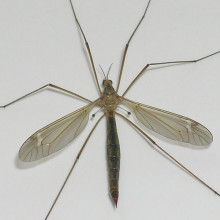
17:57 - Why are so many daddy longlegs around?
Why are so many daddy longlegs around?
with Ian Burgess, Medical Entomology Centre, Stow cum Quy
Chris - Ian Burgess is our special guest this week. Ian, tell us about these 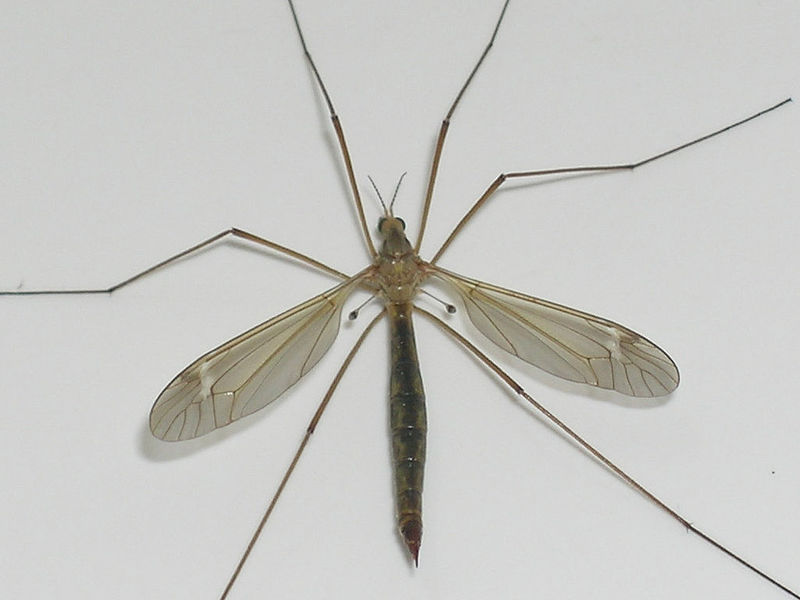 daddy longlegs that have been seemingly appearing in plagues recently.
daddy longlegs that have been seemingly appearing in plagues recently.
Ian - Yeah, there appear to have been a lot more than normal and as you said Chris, earlier they seem to be smaller than normal. In fact actually, this particular group of species does come out at this time of the year anyway.
We probably have also a slight sort of pushing around of the emergence because there are some species that have come out early in the spring. But because it was a relatively harder winter then they were delayed. But the most important thing is that most of the insects that we have in the UK really prefer to have a cold winter. Over the last 10 years or so, we've had relatively mild winters. So, they haven't had, or rather the larvae in the ground or the pupae, depending on what stage they're at at winter time. They haven't had that sort of activity suppressing effect. So, they've been using up all their energy reserves much too quickly and many of them die before they get to the point of emergence. Having had a nice cold winter, they have all been nicely tucked up in their mud or whatever and so, they survived. And now, they've come out because it's warm and probably, we're getting different species coming out that maybe would've been more spread out. They're surviving much better because the conditions are nice and they're very active you see. Much more active than perhaps they would be if it was cooler weather now.
Chris - Are they the leather jackets that we see when you put your fork and then dig up your plants and you find something has eaten all the roots of your prized shrubs?
Ian - They're larvae of leather jackets, but the ones that you find normally are the big yellow and black ones and the sort of khaki coloured ones that we're getting in the early autumn. These will have similar larvae, but they're smaller.
Chris - We heard from a gentleman from the RSPB who was talking about bird migration and why it's a major problem with things coming out of different times of year because birds normally time their arrival back in a country, in which they're going to breed, to coincide with when there's going to be lots of food for them to eat. If these insects that they would normally eat are appearing too early then the insects have been gone by the time the birds come, and then the birds don't have much food, and then their chicks don't have much food, and then you have a lower bird population.
Ian - Yes, so on other side of it is that of course, the birds can arrive too early because the things are being delayed. So this year, the house martins and so on, had a little bit of a rough time when they first arrived because the insects weren't coming out. In fact, they all nested rather later than normal because of that, because there wasn't enough to feed the chicks. Although they're all very hard at it now.
Ginny - So, what can we do to help the birds if the insects are coming out at the wrong time and we see these birds, and there's nothing for them to eat?
Ian - It depends how adjustable they are in terms of diet. I mean, things like robins and so on, although they're insectivorous, they will take seeds and stuff like that. But things like house martins and swallows that have to catch their food on the wing, there's nothing you can - unless you're going to get a big handful of insects and throw them up in the air at the right moment.
Dave - Breed lots of flies.
Chris - Is it true that there are lots of other insects, that are doing very well as well though, because my brother has taken up beekeeping and he actually came up to a village in Cambridgeshire and bought a colony of bees off of a man who was downsizing. He's taken them back to London where he lives and he said they're doing so well a) He's got 40 kilos of honey in just 2 months and also, he's had so many bees, he's had to split the hive. So, they bought another queen and it arrive by post. This is quite interesting you get this parcel in the post instead of buzzing around in the place.
Ian - That's called a nuke.
Chris - Yeah and then you take some of the bees from the existing colony and put them with the new queen and off you go. But has it been a good year for the bees then because I've only seen one in my entire summer?
Ian - Well, I have seen other honey bees, but they're rouge ones so to speak, in that they are ones that have swarmed. They've gone off and they've then gone and nested in things like chimney stacks and roof voids.
Ginny - Yeah, my parents actually. their house, they have a nest of honey bees in their chimney and they got someone and asked whether they should do something about it. They don't really mind them being there, but they do fall down the chimney from time to time and then they're all sooty and confused, and they leave footprints all over the curtains. So, they asked if they should do something about this and the guy said actually no. It's better to leave them there because if you move them on, they'll end up with a load of honey dripping down your chimney which is actually a lot harder to clean.
Chris - Can't they light a small fire. Smoke does do things to bees.
Ian - Actually, they think it's a forest fire. So, what happens is that they all drink the honey as much as they can to rescue it and then they become torpid. This is how the beekeepers control them with the smoke guns so that when they're handling the stock then the bees are not too aggressive. They're actually suppressed by the smoke. But the trouble is when they're up in an awkward place, that can be a bit of a problem and certainly, you don't light a fire in the chimney where the bees are because you will literally get the honey fallen down and then it might catch fire as well.
Ginny - Well actually, these bees have been there for a good few years now and we have lit fires in that chimney and it doesn't seem to affect them. So, I'm not sure where they are, but they do fall down quite regularly, so they must be somewhere out there.
Ian - But it's not just the honey bees. Bumblebees have had a stunning year as far as I can see. I mean many, many nests. We've got a nest in our roof that's been there for 2 years and where I go for a walk at lunchtime, there's an avenue of lime trees and once you get far enough away from the road and you just stand underneath there, you hear constant mmmm. If you look up the whole tree, is alive with bumblebees.
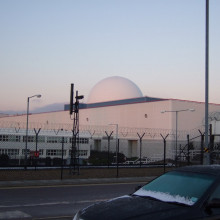
Could nuclear waste be disposed of in subduction zones?
Dave - So, this sounds like a lovely idea, this subduction zone. It's where stuff is being sucked down deep into the earth and you'd expect then it not to come back out again and it will be a nice comfortable place to put all the nasty stuff we want to get rid of. Actually, that's not quite how the geology works. Where a subduction plate gets pulled down under earth, it gets a huge amount of friction and that surface layer get very, very hot. That surface layer tends to melt and then come back up to the surface and form a volcano. And so, you get a lot of volcanism related to subduction zones and it's this top layer heating up, melting and floating up to the surface through the surrounding rock and creating volcanoes. This means that actually, if you put all your nuclear waste on that surface zone, there's a big possibility it would shoot out a volcano, probably in a few hundred thousand million years later. And also, there's an awful lot of water, hot fluids flooding through that so there's a really, really aggressive environment. Chris - What about John's point about the magnetic field?
Dave - So, magnetic field is all to do with the very, very centre of the earth, right down in the core. In there, there's some complicated system involving liquid metal flowing around because parts of the core is metal and to do with the earth spinning and a convection current in there which to be honest I understand and I think scientists have only recently understood it at all. Creates this magnetic field and so, doing anything near the surface probably isn't going to affect that very much. It's got to go down through the whole mantle which is thousands of kilometres of really thick gooey rock. I think at the moment, the best thing for the nuclear waste is probably just to bury it somewhere where nothing is going to happen. So, a really dull geological place, ideally in some clay because it will sit there for a hundred thousand, few million years. Nothing is going to happen to it and you can just sit there until it calms down and isn't dangerous anymore.
Chris - A lot of people say, "Well, we'll just embed it in concrete or glass or something" but then there was this paper which was published by Ian Farnan who's a researcher at Cambridge University about 7 or 8 years ago. He found that if you look at the ceramics that you put these radioactive chemicals into, because of the radioactive decay, when a uranium atom decays, it fires almost like a recoil as it fires out a radioactive particle. It's like a gun recoiling into your shoulder when you fire a shotgun for example. This has the effect of knocking all of the other atoms off kilter in the substance. The result of that is that over time, with all these atoms being knocked off kilter, you end up with the material becoming amorphous as it's called and it's basically riddled with holes. It's leaky. So, after just 5,000 years, you'd go from something which was a solid concrete or piece of glass which would be something analogous to a sieve.
Dave - Yeah, this is why you want to put it in some rock which is naturally waterproof and actually doesn't have cracks in it which is why I think the ideal solution is a big lump of clay. I think East Anglia is meant to be especially good for it. But possibly not popular.
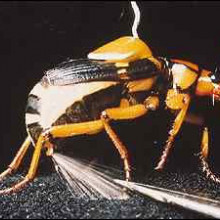
Why are there no whale-sized insects?
Ian Burgess - Okay, right. Well, an insect depends for its structural integrity on having its external skeleton. Of course, we have an internal skeleton which can be relatively robust and therefore, relatively light. If you had a suit of armour on the outside, in order to get the same sort of robustness, it needs to be relatively thick and is actually quite heavy. If you've ever tried a suit of armour on, or even something very similar, you'll know how difficult it was fighting 400 years ago. Now, for an insect to carry that around, it needs a huge amount of muscle and a lot of energy expenditure. So, it requires particular conditions in order to grow bigger and the biggest insects that we have at the moment are things like goliath beetles which just about will cover the palm of your hand or the biggest ones will. Most of them are a bit smaller than that. But back in the Carboniferous which is what, 400 million years ago, the insects had more oxygen, although oxygen is an interesting thing as regards to insects because it can be toxic if they have too much. So, they were able to grow bigger because the conditions enabled them to actually have the energy that they could use and they could grow bigger and support in the heavier atmosphere.
Dave - So, isn't this because, they don't have lungs so they can't get the oxygen to the - if you had something in the size of cow, the middle of an insect just wouldn't be able to breathe.
Ian - No, I don't think that's really the issue. It's the physical structure of supporting all of that external skeleton. So, the things that did grow big then were relatively lightly constructed - things like dragonflies and if you look at a dragonfly, it's sort of spindly. It's like one of the wonderful designs of second World War aircraft. It looks as though it was only just held together. The other insects that grew moderately big, you got some big cockroaches and there was another insect, a big spider at that time as big as a dinner plate, but that's about as far as they could go. Now, if you wanted to get much bigger than that, then you'd have to find some way of supporting then other than necessarily the - just muscles and a big thick armour. So, if we had an insect the size of a whale, it would probably have about a meter thickness of external skeleton just to keep it together.
Chris - That's quite a skeleton isn't it?
Ian - So, unless it manages to find some way of - because of course we're dealing with biological materials rather than sort of a sheet metal, so in order to have it that big and support itself, so it has to find some way of getting bouyancy as well. The only reason why it grows as enormous as it does is because it has the water to support it. If you put a whale on land, even a little tiny whale, it suffocates because it can't even support its own breathing.
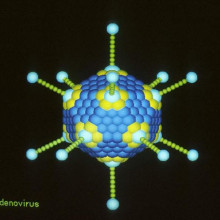
Are Pandora viruses a fourth domain of life?
Chris - It's amazing. What do you know about it Damon? Tell us what you know about it.
Damon - I don't know much. I think they said you could even see it with a standard microscope. It was that large.
Chris - Yeah. It's published in Science this week. It's by a group in France who discovered this. Actually, they discovered this massive virus in a pool of freshwater, a pond basically, near Melbourne in Australia. They also found a very similar virus off the coast of Chile and these viruses, they've dubbed the Pandora viruses because when they had a look at them genetically, then it was anyone's guess what was in there because they did not bear any resemblance to any kind of life than we'd ever found before. So, we talk about life having 3 established domains. There's the eukaryotes - cells like ours. There's prokaryotes - they're bacteria, we know about those and then there's another sort of ancient evolutionary spinoff called the archaea. And we were very happy that all life on earth fitted into those 3. Now, we've got these viruses that have come along. That a) are huge, they're more than a thousandth of a millimetre across which is in virus terms, that's like you walking down the street and bump into someone 60 feet tall. They are enormous, these viruses and they bear no genetic resemblance to anything else that exists on the earth. So, the big questions are, why do they exist? Why are they so huge? I mean, what they do is they live on amoebae, these little single-celled organisms, they prey on them. As I said, absolutely enormous with a huge genome. They've got 2.5 million genetic letters in their genome, which is massive. I mean, it's 10 times bigger than your average virus does. So, scientists are saying, 'well, when we look in the sea and we find all these bacteria that we can't grow in culture.' Actually, they might not be bacteria that we can't grow at all. They might be viruses. These massive viruses that we previously hadn't realised because the people who write the paper have said - well actually, 13 years ago looking in the literature, people described these funny particles and they didn't know what they were. They thought they were some funny hard to grow bacterium because they were so big, because they're literally 10 times bigger than a normal virus. And now, they realise they are a virus, but we don't know what the hell they are.
Dave - So, when you say then nothing like anything else say in life basically, so if they're a virus, surely, they must be hijacking another animals sort of replication machinery. So surely, it can't be that different otherwise it wouldn't work.
Chris - Sure, the genetic code is exactly the same, so a gene in them will the same sort of gene, it would work the same way in one of our cells and vice versa. They haven't rewritten the genetic code, but they prey on amoebae and they just make more new viruses and it's interesting because what most viruses do when they make a virus particle is that they make the coat of the virus and then they stuff the genetic material inside. These things start basically almost like they're knitting a jumper. They knit, the coat as well as the genetic material into it all at once. So, they have this really weird way of growing and they have genetic material, they don't use genes which are used by any other organisms that we know of apart from them. So, exactly why they exist and where they've come from, we don't know. They are completely alien species. Are you spooked, Damon?
Damon - Not so much spooked as just confused.
Ian - I'm just wondering if these are one of the hangovers from the Precambrian when you had a huge diversity of different life forms and some of those went on into the Cambrian and produced really exotic things that then suddenly vanished. Maybe these were something really exotic, but they just happen to have been saved in the deep oceans and places like that of obscure places, and they're part of what went on to be the Burgess Shale type things.
Chris - Now, they've been discovered, I guess we'll look in and we'll find out, but it's very interesting, isn't it?

How do we know the Earth's core is solid?
Dave - There's two different main kinds of waves: One is a pressure wave. It's like a sound wave, whereby the movement, the wobble, is in the same direction as the wave is travelling.
A shear wave is like a wave on a string, so it's at a right angle to the way the wave is travelling. In a liquid you can't get any shear waves except on the surface. So, in the bulk of a liquid - in the body of a liquid - all the waves must be pressure waves. In fact, that's true in a fluid of any kind, which includes gases as well. But at the surface of a liquid you can get shear waves and you can get shear waves created when a pressure wave hits a surface.
So, basically, the way they found out that the centre of the earth is solid is that when waves created by earthquakes on the surface go down, they hit the liquid outer core and then, when they go from a liquid outer core into the solid inner core, you get a extra wave going off at right angles in a strange direction.
This would only happen because if it's a shear wave. Then you see the results of that coming out through the liquid outer core and bouncing off to an earthquake station on the wrong side of the planet where it shouldn't be. The only way, you can explain those waves getting to the earthquake station there is if the centre of the earth is solid and there's a shear wave going through it.

Why are we sensitive to red green and blue?
Dave - Okay, I've built some experiments on this recently and basically, this is due to what you think the three primary colours are, aren't necessarily actually the three primary colours. There's two different kinds of primary colours; one is light, so there's red, green and blue which can trigger the three different kinds of cones in your eye and you can fake pretty much any colour by using red, green and blue. That's what the TV does. The other kind of primary colours are when you want to go painting. Painting works in almost the opposite way around, you're starting off with white light reflecting off your white piece of paper and then you add things to it to absorb colours. So, the three primary colours of paint are yellow which absorbs blue light, sort of purple which absorbs green light, and turquoise which absorbs red light, and then you can add those together in different quantities and take away whichever mix of colours you like, and end up with fooling your eye to present any colour you like. Red, yellow and blue aren't really any kind of primary colours. They're just what primary school teachers tell you and they're just confusing. Chris - There you go, Robin.
Robin - Confusing all others, yes. Thank you very much then.
Chris - I mean, the bottom line here is that in the back of your eye, you have these cones and they have dye pigment molecules in them that are sensitive to lights of different colours. They respond different amounts to different colours and the eyes, basically comparing what amount of activation there is of these different dyes in proportion to each other. It knows that if you have a certain amount of the red one and a certain amount of the green one, this must be a colour somewhere in between the two.
Robin - Yes, and they reflect in some sort of negative way, as you say, the turquoise reflects in red and...
Dave - Absorbing red, yeah.
Ginny - So, the other way you can think of it is from an evolutionary point of view and actually, primates like us, we're quite unusual in being able to see the spectrum of colours that we can see. So, the red, green distinction is thought to be relatively recent and that was thought to be because it was really important for us to be able to tell when fruits were ripe. So, it really became important for us to be able to see a ripe red strawberry in a green bush. So, we evolved this ability that a lot of other animals don't have. So, we now use vision a lot more than things like smell which is much more important for other animals. That might be because of this same reason we evolve this ability to tell red and green apart so well, and then a lot of monkeys and things use, you know, red bottoms and things like that to signal sex rather than smell.
Chris - And besides from traffic light, only red doesn't mean stop.
Ginny - Exactly.
Chris - Because Ian, some animals and insects see in domains like ultraviolet. Bees can see UV, can't they?
Ian Burgess - Indeed, yes. Actually, the spectrum that we see is really quite tiny and if you look at what insects can see, much of it is shifted as you say towards the UV. But it is not only much broader, it's much more spectacular when you look at it in an insect's eye view.

Why don't people in Australia feel upside down?
Transcript to follow...
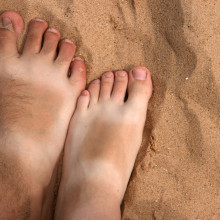
Are there any medicines that give you a sun-tan?
Transcript to follow...

Could a planet have a green atmosphere?
We put this question to Dave Ansell...
Dave - Okay so I think it be difficult to get a green atmosphere in the same way as we have a green atmosphere on Earth, which is scattering and mostly at the blue end of the spectrum. You might be able get a slightly green tends to that if you're very very clever but I can't really see how you could do it. The only gas I can think of which is very definitely green is chlorine and that's an incredibly reactive gas similar to oxygen. So you'd have to kind of hypothesize some kind of life based on taking in sunlight and giving out chlorine rather than oxygen.
Chris - We have life that uses oxygen because oxygen was abundant. And it's an oxidizing agent. So it's not beyond the ken of reasonable grounds that chlorine could do that is it? As you can light a candle and put it in a vat of chlorine and the candle will burn...
Dave - Yeah. So it's not entirely implausible. I wouldn't want to visit it' because it would be a scary place to go!
Chris - Pretty horrible place! There you go Jeff! So you need planet "Cloros" or something similar! We think chlorine...
Jeff - Okay!
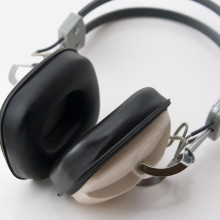
How do noise cancelling headphones work?
Transcript to follow...
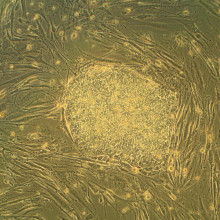
How do stem cells know what to grow into?
Transcript to follow...










Comments
Add a comment